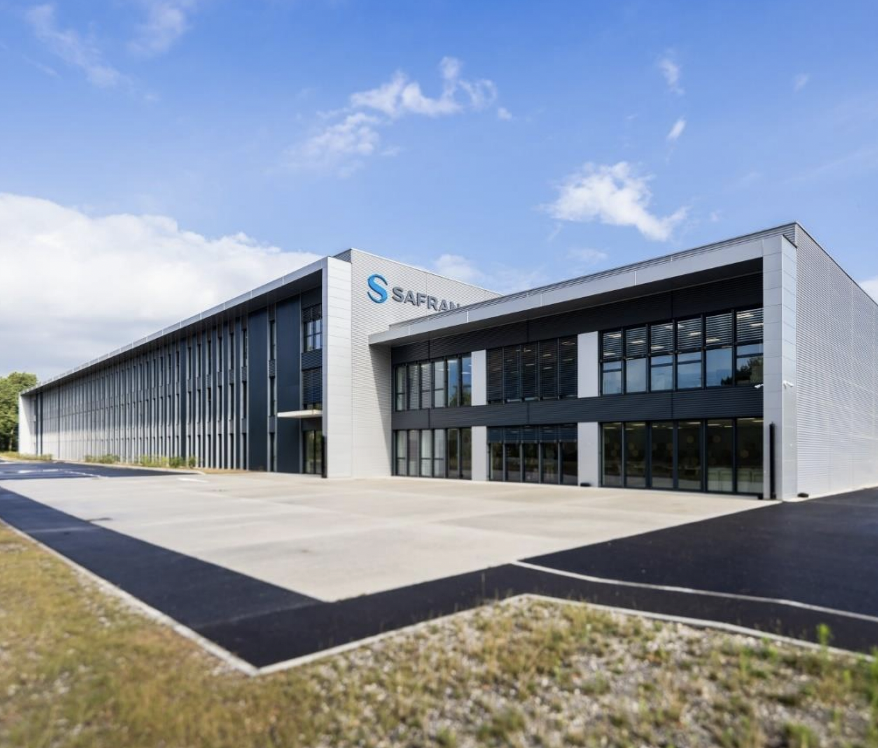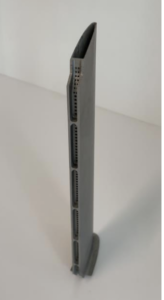French engines and engineering firm Safran (SAF.PA) has inaugurated an Additive Manufacturing Campus, a 3D printing center of excellence, in Le Haillan. In attendance at the grand opening ceremony were Safran CEO Olivier Andriès and French Minister of Industry Roland Lescure, among other notables.
The 12.500 square meter campus employs 100 3D printing specialists and will grow to 200 staff soon. Safran has invested €80 million in the campus, which centralizes all additive manufacturing (AM) activities across the company. The facility will feature a powder lab, metallurgical lab, scanning electrical microscope, two heat treatment furnaces, finishing equipment, and at least eight powder bed fusion 3D printers. This number doesn’t seem like all that much, given the fact that Safran was known to have Renishaw, SLM Solutions, and Additive Industries units. Therefore, it may not have acquired more for the new facility.
Safran stated that currently less than one percent of its output features 3D printed components. Eventually, it forsees some engines containing 25 percent 3D printed components. Safran claims that, with machining, a fitting would typically need ten kilos of material to obtain a single kilogram of part. With casting a 500 gramme part it would require two kilos of materials. In contrast, an additive component would weigh 400 grams and require just 600 grams of material. With these benefits, as well as weight savings, part integration, and the potential overall benefits of the technology, the company hopes to speed up its deployment of additive to become more agile as an organization
To achieve this, Safran has already qualified 10 components for its various divisions and is working with additive across all of its units. Safran Helicopter has produced over a 1,000 3D printed parts so far and plans to ramp up AM with the campus seeking to make 4,000 components in 2022 and over 8,000 in 2023. This includes five qualified components for its M88 engine, currently in development.
Safran CEO Olivier Andries said of the new facility, “We made a strategic decision to create this new center of excellence to consolidate Safran’s expertise in additive manufacturing and accelerate the application of this disruptive technology. We will be leveraging the advantages of this technology to make our new products even lighter, while enhancing their performance – and that’s the key to meeting our industry’s objective of reducing its environmental impact. A quarter of the parts in some of our engines could eventually be made using this process.”
Safran in the Larger Aerospace 3D Printing Market
Safran is a bit of a laggard in 3D printing. The $24-billion group has extensive businesses across aircraft, helicopter, and rocket engines for the Ariane rockets, as well as landing systems, nacelles, aircraft wiring, and fluid management and cabin equipment. It really is hard to come up with many other companies that would benefit more from AM than Safran. After all, it is one of the world’s largest aircraft companies and a large missile propulsion manufacturer, in addition to producing engines. These are all areas where 3D printing can make a huge impact.
If we look at Saran’s various competitors, from Pratt & Whitney and GE in engines to the new space firms in space propulsion and likes of Honeywell in other parts, every company has done more in AM than Safran. The U.S. defense establishment has really shown a focus on developing new 3D printing technologies and encouraging American businesses to use them. This has led to tens of thousands of parts on Boeing aircraft for years, along with significant investments in additive. GE´s spending is the most known, but many other U.S. military giants, such as Lockheed, Raytheon, and Northrop have also spent significantly on 3D printing.
In the U.S., the defense sector often leads in technology innovation and R&D for the cutting edge. In Europe, funding has been directed to more peaceful areas. Yes ,Europe has funded new technologies in nanoprinting and elsewhere. However, its lack of focus on defense and space has meant that the U.S. currently has a clear lead in turbo machinery, rocket propulsion and space applications for 3D printing. Safran’s campus is a good step forward, but the firm and the European defense and research establishments will have to tack a few zeros on that €80 million to catch up.
Subscribe to Our Email Newsletter
Stay up-to-date on all the latest news from the 3D printing industry and receive information and offers from third party vendors.
You May Also Like
HILOS Launches Studio OS for AI-Driven 3D Printed Shoe Design
At Milan Design Week, footwear 3D printing startup HILOS has unveiled its latest development, Studio OS. Introduced at the historical Villa Bagatti Valsecchi, the platform is meant to redefine how...
3D Printing Webinar and Event Roundup: April 28, 2024
In this week’s 3D Printing Webinar and Event Roundup, the Ceramics Expo is taking place in Michigan, Stratasys continues its advanced training courses, and SPE is holding a Polymer Characterization...
Initial Speakers and Sponsors Announced for Additive Manufacturing Strategies 2025
Nearly a year away from the event, the Additive Manufacturing Strategies (AMS) 2025 conference is already beginning to take shape. Building upon the success of 2024’s summit, AMS has established...
HP & INDO-MIM Collaborate to Boost Metal 3D Printing in India
HP Inc. and INDO-MIM, a US- and India-based supplier of metal injection molding (MIM) powders and contract manufacturer, have announced that the two companies will collaborate to accelerate additive manufacturing...


































